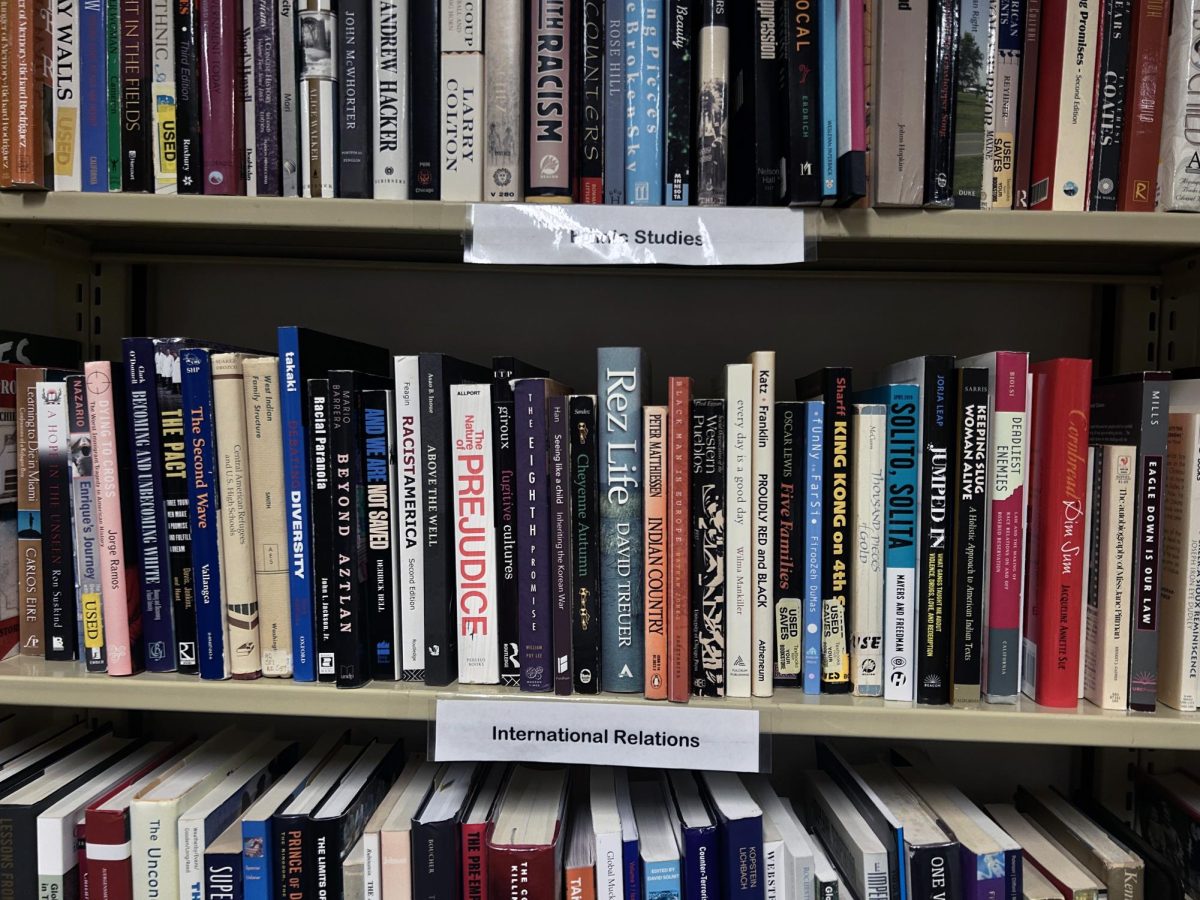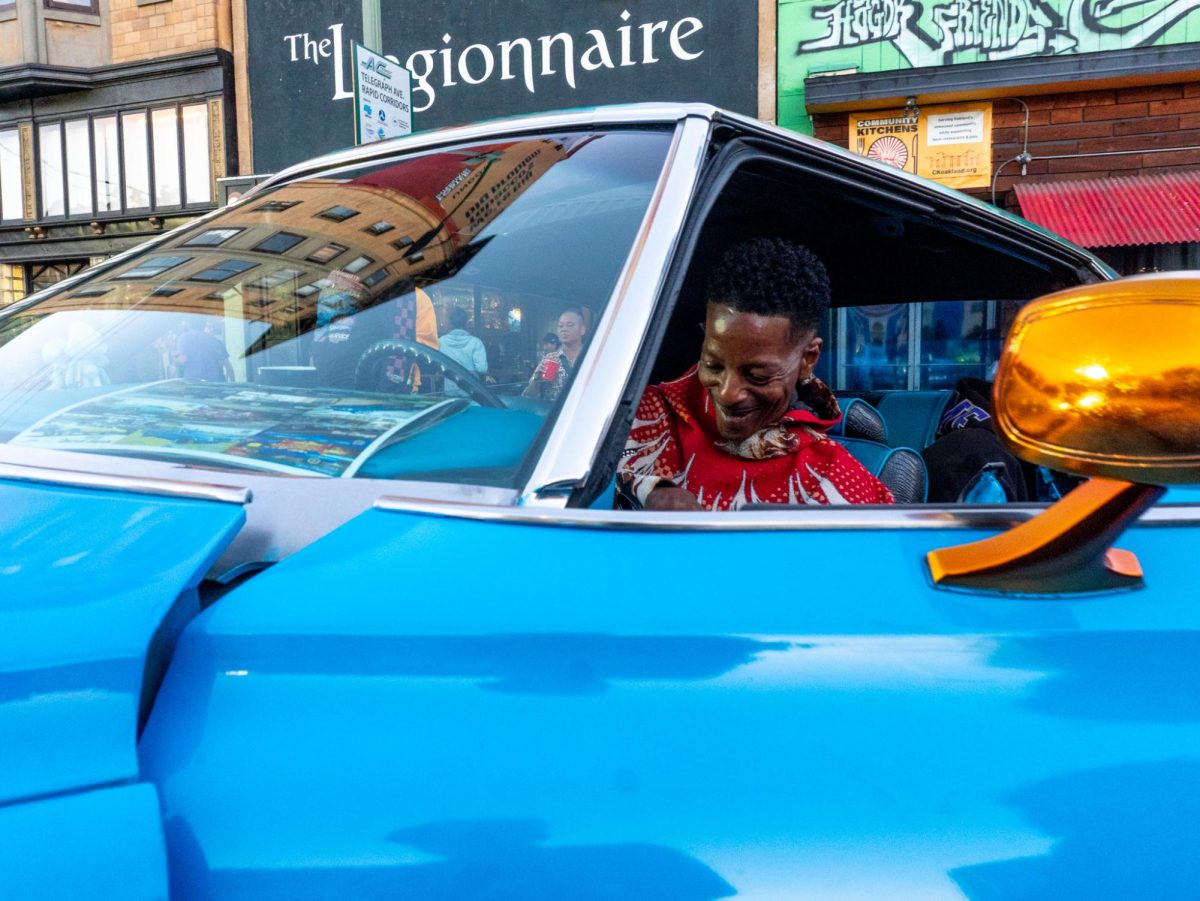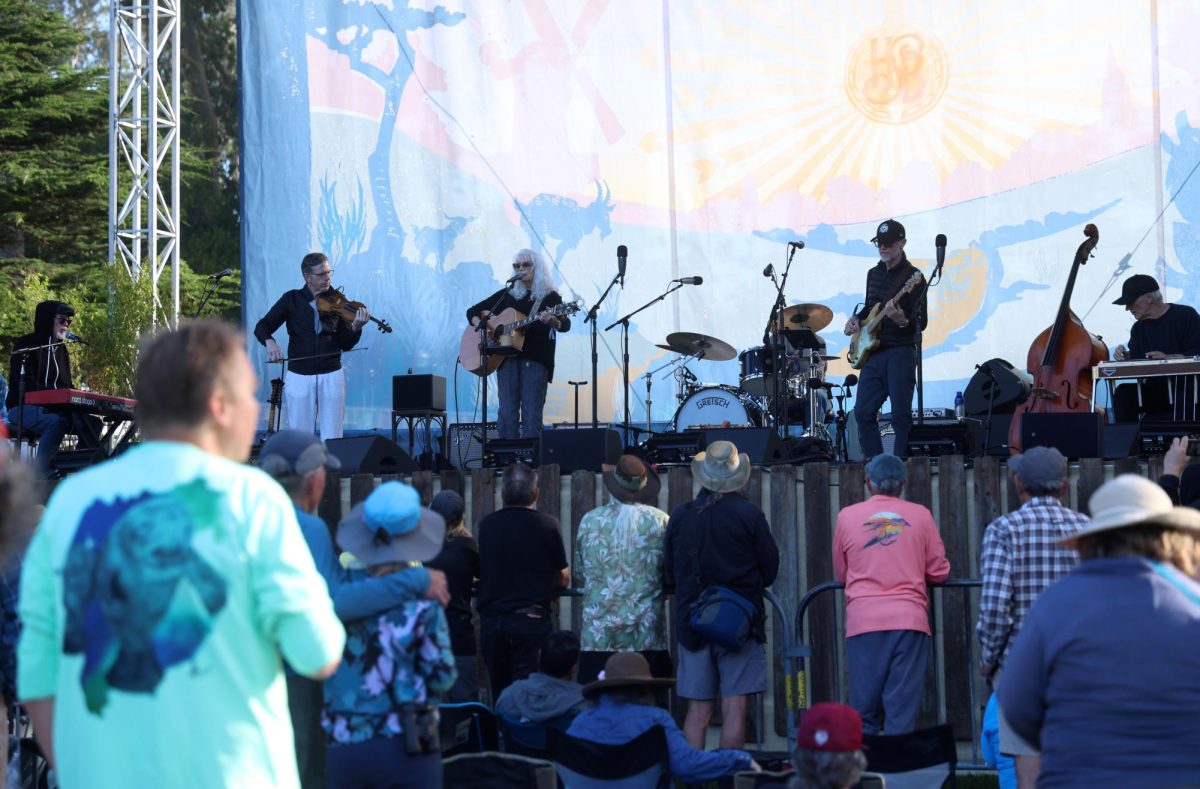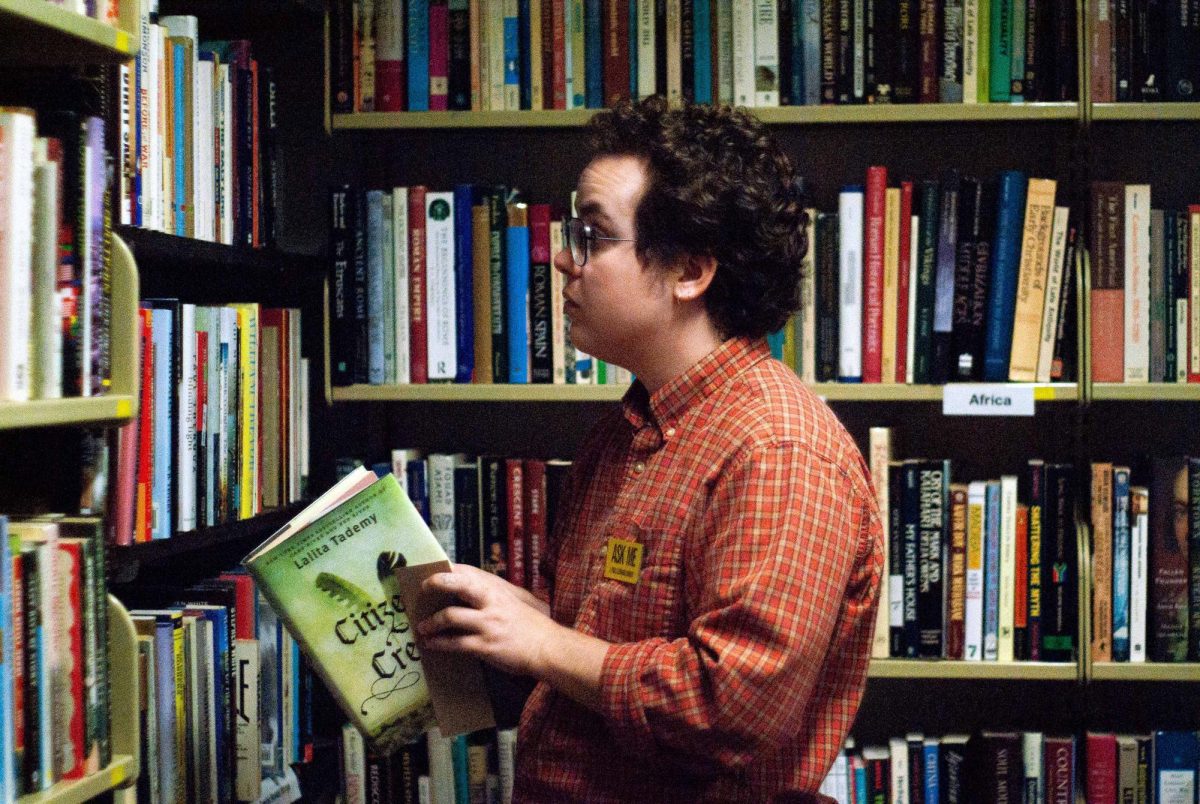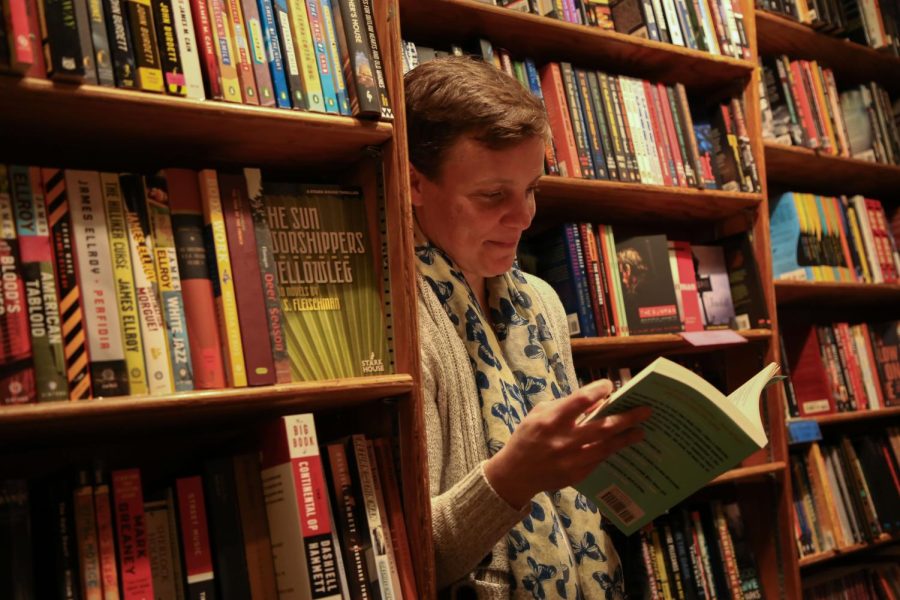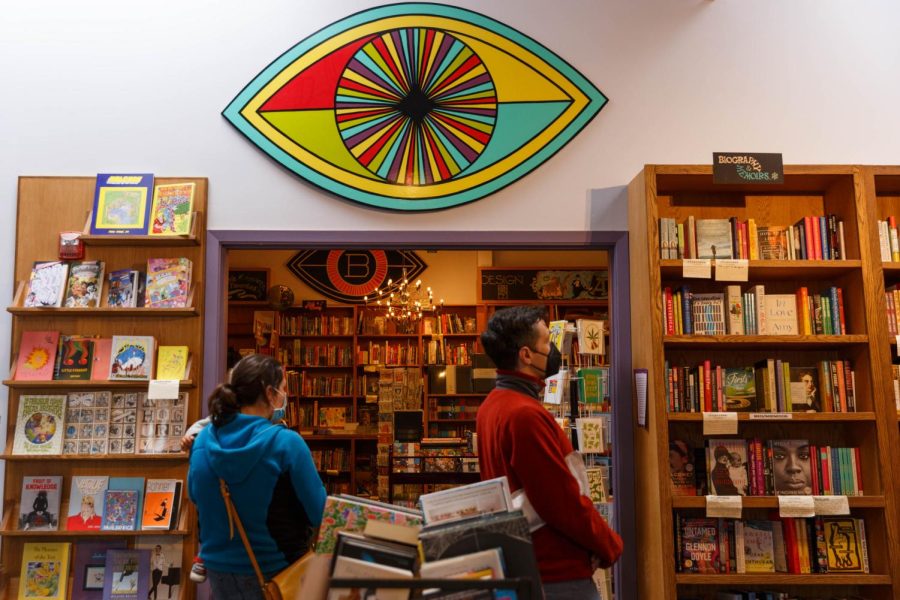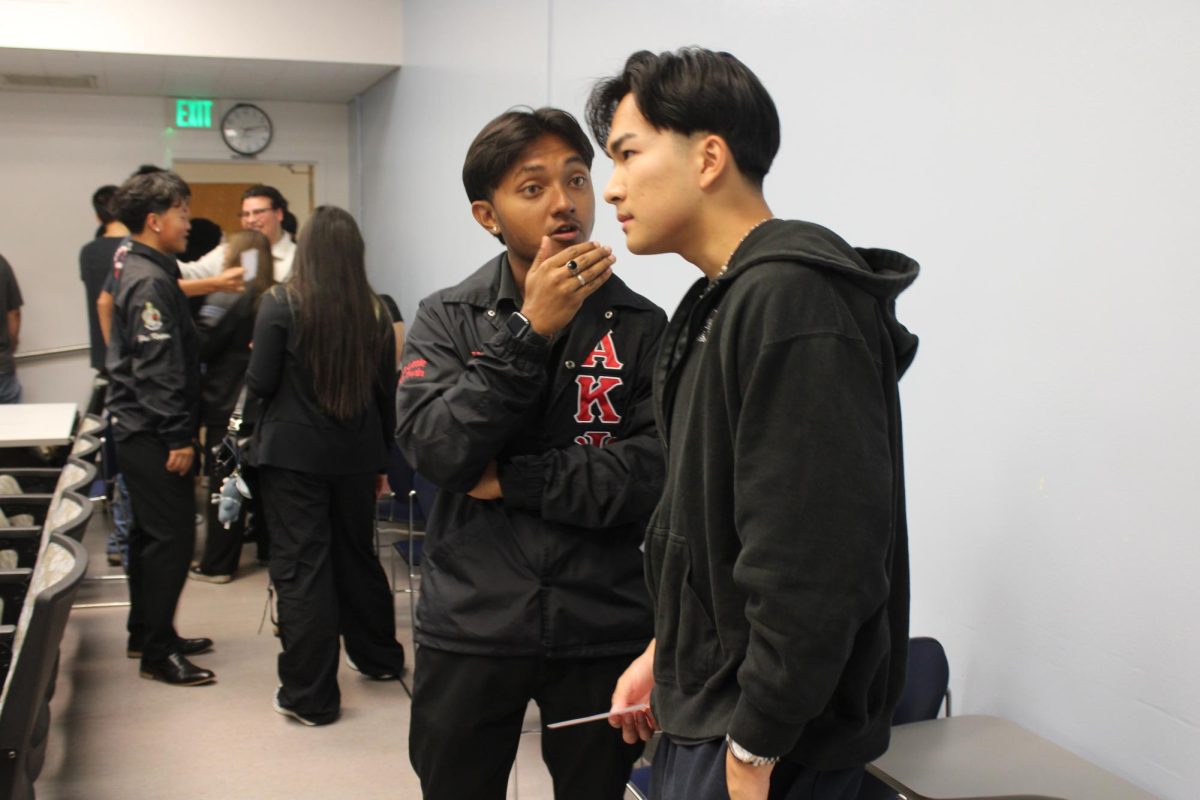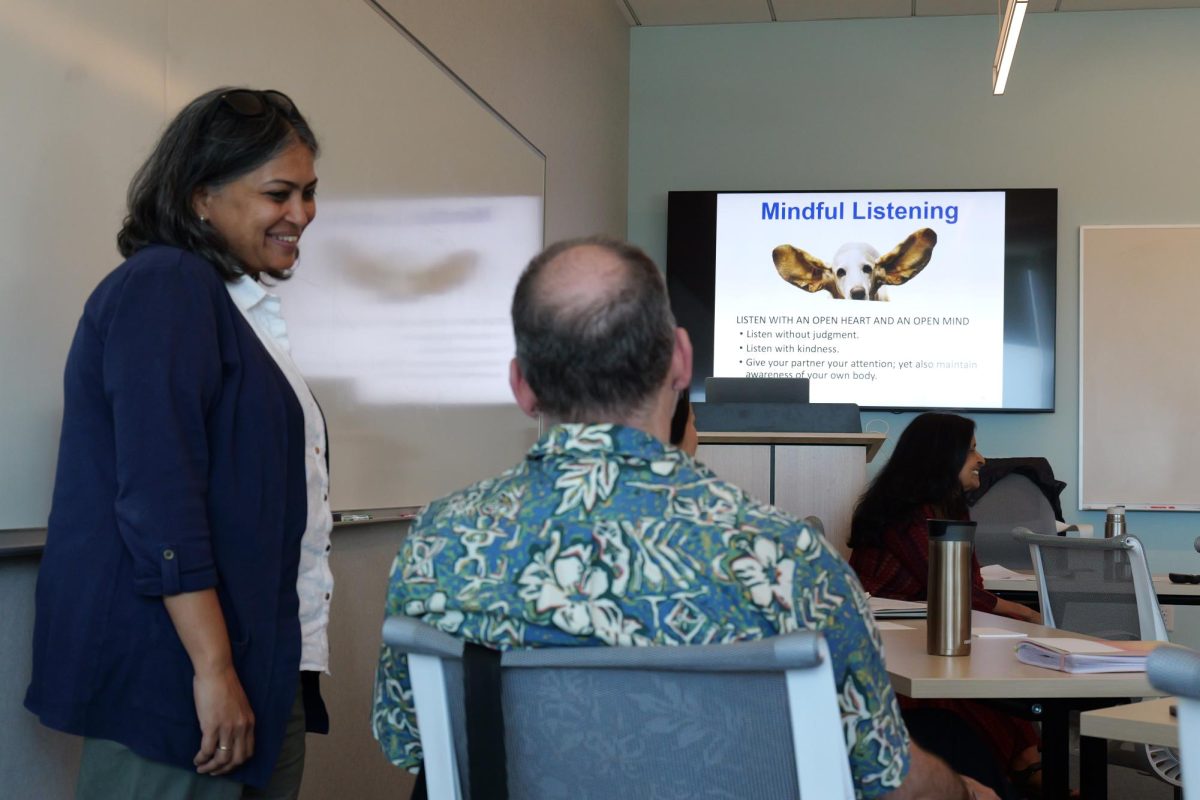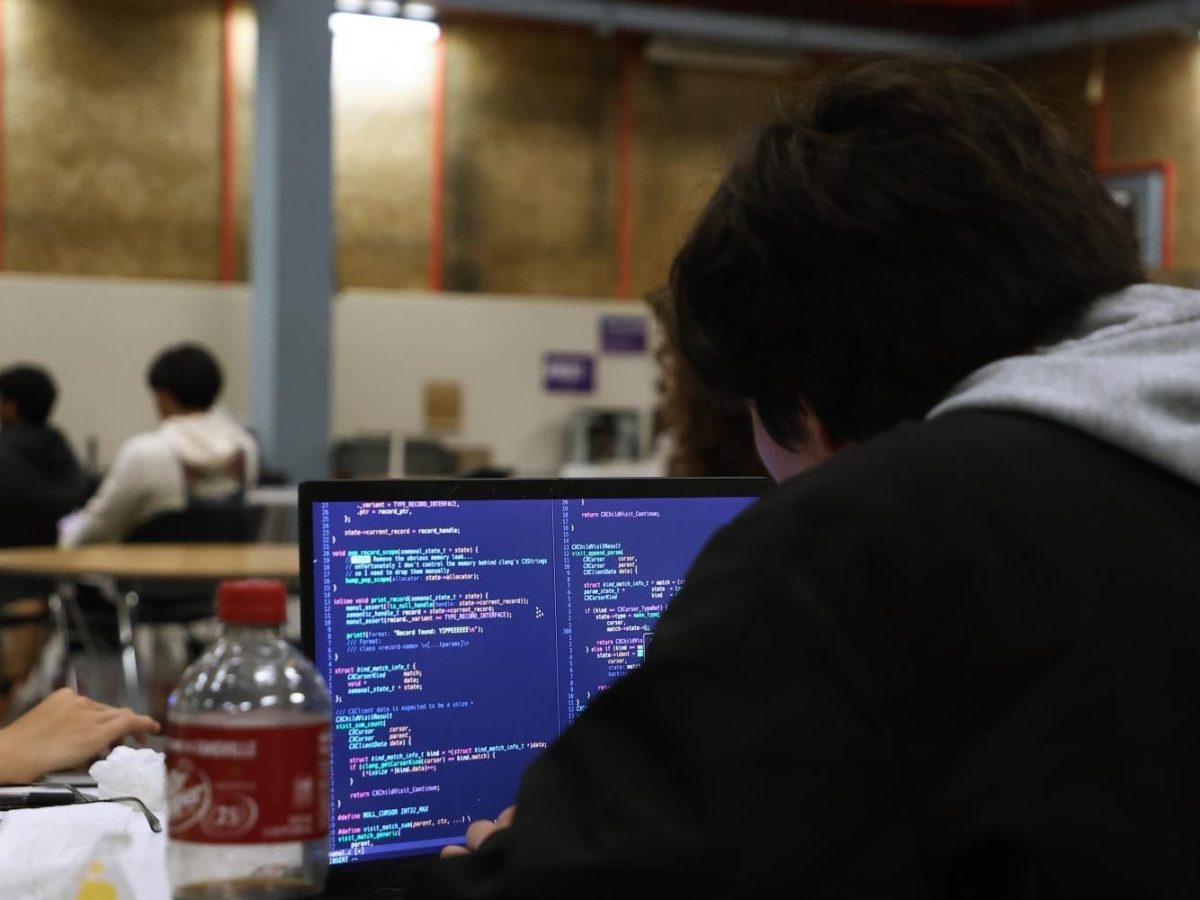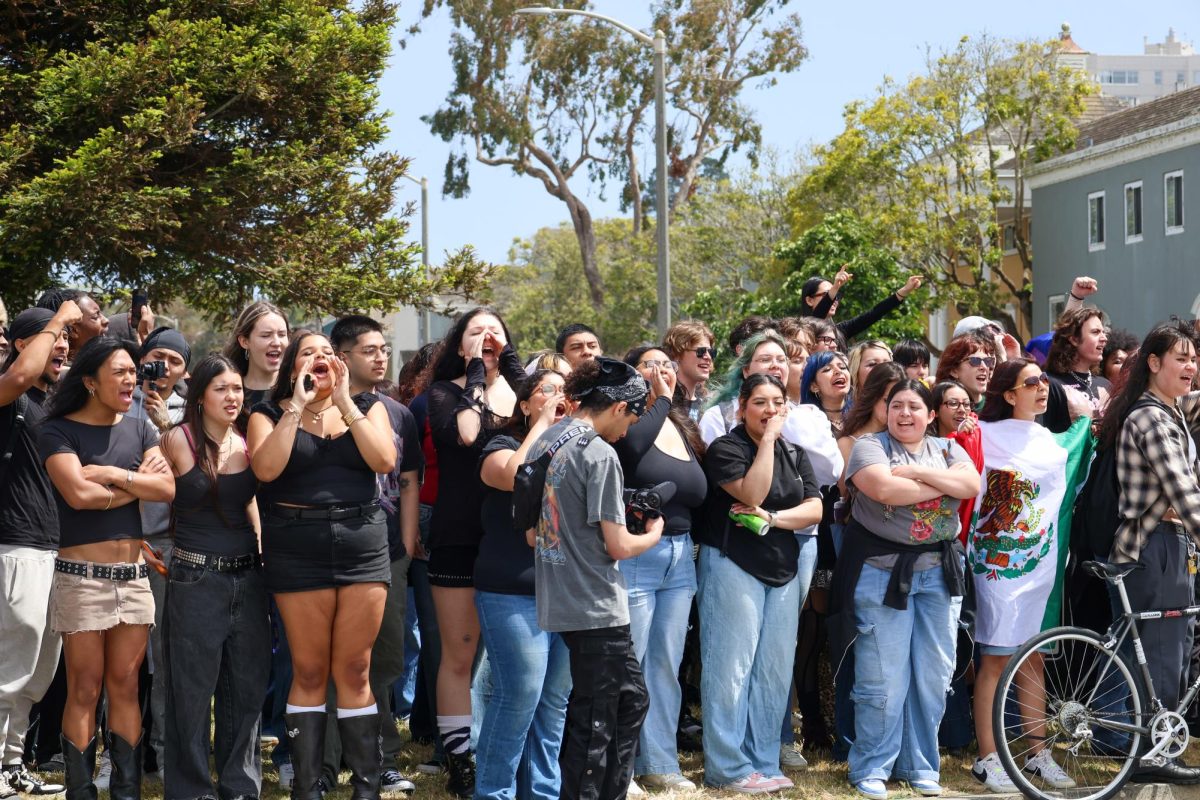New Yorker Magazines from 1939 are stacked on the librarian conference table on the third floor of J. Paul Leonard Library. Their thick, glossy paper is in pristine condition – Melanie Smith, the first-year experience librarian at SF State, uses these recycled magazines for library displays and activities for students.
The Friends of the Library bookstore has thousands of books in need of a second life or a new owner. Paperback books are $1 and hardcover books are $2. Proceeds go to scholarships for the students who work in the library. All a student has to do is have some pocket cash and an open eye. The Hunger Games books, Bob Woodward’s investigative journalism, an original print of Jane Eyre, textbooks for classes, even Star Trek magazines from the 1990s can be found on the shelves of the Friends of the Library bookstore.
But what happens to a book after it has been donated to this used bookstore?
If a book is sold, the life of the book is in the hands of its new owner. However, if a book or magazine cannot be sold, there are several ways they can find a new purpose in order to stay out of landfills.. While some books are given to DR3 Recycling to be turned into egg cartons, Loomis donates secondhand media to Smith for library projects, events and displays. According to Words Rated and Chicago Review of Books, more than 160,000 “truck loads” of unread books are wasted each year. In landfills, paper counts for 26% of waste.
“They [the books] definitely keep a lot of material from going into the landfill,” said Loomis. “For us, we get books donated in all kinds of conditions and some of them really aren’t sellable. Even those we send to St. Vincent De Paul and they turn it into recycled paper for egg cartons.”
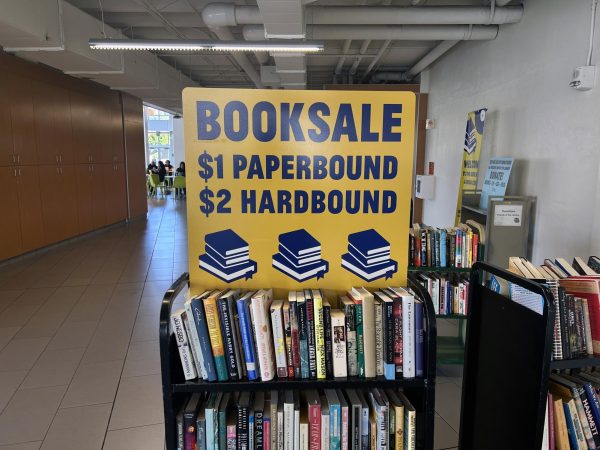
The More, the Merrier
The Friends of the Library used bookstore is located at J. Paul Leonard Library on campus. It is a resource for students to purchase books for cheap.
Loomis is currently the president of the SF State Friends of the Library. All of the people that work in the bookstore are volunteers. The FOTL provides up to five scholarships for students who work for the library, helping fund the Labor Archive and Research Center’s exhibitions.
“I think mostly just to invite everybody to come in and look around because it’s just a great place to browse,” Loomis said, in regards to what students should know about FOTL.
Loomis rotates the books as much as possible – approximately once a week – to keep things interesting for customers. As of October, Loomis said she had around 4,500 books on the shelves with twice as many in a storage room.
“We actually have a really good selection for a room this small,” Loomis said. “If you just named a topic off the top of your head that you were interested in, I bet we could find something that was pretty close to what you were looking for.”
Loomis recently received a large donation of cookbooks and photography books that she has added to the FOTL shelves.
Before running the used bookstore on campus, Loomis was a teacher in the history department at SF State until her retirement in 2012. One of her colleagues from the history department created the FOTL at SF State and still volunteers on Monday mornings.
The president of FOTL dedicates one day a week to sitting at the desk and running the bookstore, which is cash only.
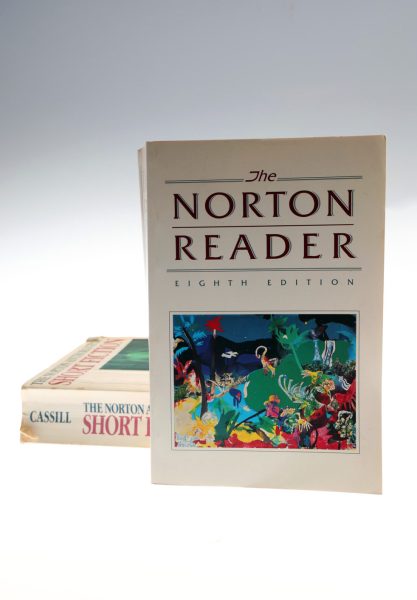
The SF State Display
In the librarian’s personal workspace, around eight boxes of books and magazines sit on the floor/desk/shelves. These boxes were given to Smith, which she uses for library activities and events.
“The things we get from the Friends [of the Library] are pretty randomly assorted,” Smith said. “But generally speaking it’s stuff they can’t sell that’s not gonna move to the used bookstore.”
Paul Leonard Library used secondhand books for National Library Week last spring. Course Materials Specialist, Elliott Scheuer made a book porcupine display and garland from old paperback books. “Giving folks a chance to kinda pick through these things and make something new out of them is gonna be really fun,” Smith said.
Smith said that last spring, the library hosted a blackout poetry event where students took an old book and a marker and blacked out text, creating a poem with the remaining words.
According to Smith, the FOTL donates to J. Paul Leonard Library a few times a year. However, it depends on the donation rate and when Loomis cleans out the inventory of what materials aren’t selling.
“A lot of the materials end up back in some of these cabinets up here or in other storage spaces, and bits get re-used for future stuff,” Smith said, pointing to filing cabinets in the librarian’s workspace.
Smith is adamant about keeping paper and used books out of the landfill. She said there’s only so much space the earth can take. So, by having used books in the landfill it’s not really helping anybody, said Smith.
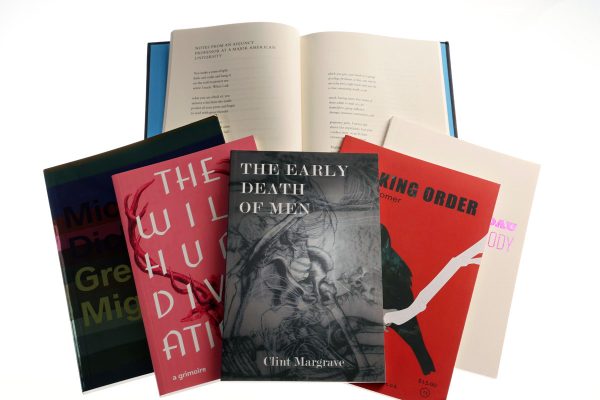
“I think books – even old books – maybe especially old books, have a lot of evocative potential for people,” Smith said. “There’s a lot of story and emotion and history and memory that’s wrapped up in some types of books. And also the visual imagery you can find. They have so much potential that if we just bury them underground – I think we’re missing an opportunity.”
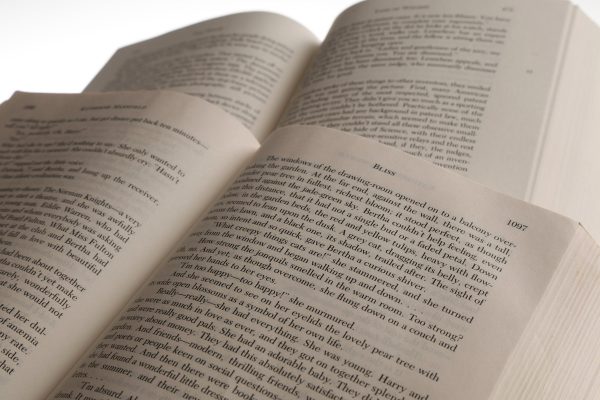
The Landfill Manuscript
The San Francisco Environment Department encourages and provides a resource for residents to get rid of damaged or unwanted books and paper.
“Even the totally damaged books that are not good for the environment, are not good for somebody’s library still can be reused again rather than just filling up a dump somewhere,” Loomis said.
Joseph Piasecki is the public affairs and policy coordinator at the SF Environment Department.
“Our zero waste team works quite intimately with Recology and how we educate our communities on what we recommend residents and our commercial businesses do,” Piasecki said. “Clean, dry paper should be loosely placed in the blue bin in order to be recycled.”
Jessica Narvios is the residential zero waste associate for the SF Environment Department. She noted there are several places to take books for donation in the vendor listings, located on the SF Environment Department website.
“If books are donated or repurposed, it just saves on the space in the landfill,” Narvios said. “It is conserving trees from being cut down and just cutting back on water usage used to make paper products.”
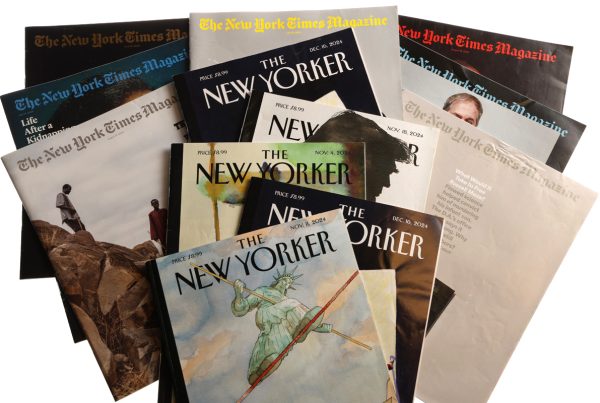
According to Statista, the book publishing industry in the United States has a projected revenue of around $26 billion in 2025. Paperboard mills are connected to the water consumption used for making new books. These mills are among the most water-intensive factors in the US, according to Statista.
As of 2020, Paperboard mills use 36 gallons per $1.
Narvios likes that the first route to getting rid of an unwanted book is to resell it.Also, she recommends that residents go to Goodwill, Salvation Army or even the Friends of the San Francisco Public Library to donate used books.
Beyond the Shelf
The Friends of the Library at SF State is not the only one to exist. In 1961, Marjorie Stern, Mary Lousie Strong, Hilde Kolb and Grace Macduff Parker created Friends of the Public Library. The FOTL at SF State is an extension of the used bookstore at the SF Public Library.
Karsyn Kapur is the marketing manager at Friends of the SF Public Library.
“Normally, Friends of the Library Systems don’t have as robust of a book program that we have,” Kapur said. “We’re kinda unique in that way, in San Francisco, we accept donated books and sell them at our Friends’ bookstore, our monthly book sales, we also sell them online.”
All of the funds raised from Friends of the SF Public Library are used towards library programs in SF. According to Michael-Vincent D’Anella-Mercanti, the director of communications & advocacy for Friends of the SF Public Library, the program is robust and has gained a lot more attraction than just the cart outside of the library.
Last year, the SF Public Friends of the Library received 354 tons of donated books, or about 398,000 items Mercanti said in an interview.
Similar to the SF State FOTL, the people working at the SF public library bookstore are volunteers.
“If you’re looking at the journey of the book, it goes through the donation – every book gets looked at – and sorted,” Mercanti said. “There’s a cut off of how much we can make online. That’s either, do we sell it wholesale or sell it at our bookstore?”
Mercanti said that every book that comes in receives a second life. The books are priced to sell and there is a heavy rotation of books in the store. The Friends of the SF Public Library has a larger inventory than SF State’s FOTL.
“There are so many other uses from it,” Kapur said, in regards to keeping books out of the landfill and donating them. “I think environmentally it doesn’t make sense to throw any book away if it’s in good shape.”
Mercanti said that every neighborhood needs a bookstore. For SF State students, the Friends of the Library is their neighborhood bookstore.
“Reading is everything,” Loomis said. “It opens up new horizons, it reminds you of old friends, it helps you escape.”



